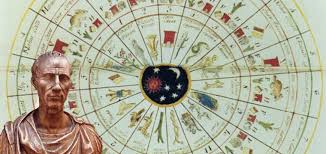Wszystkie kalendarze czasów starożytnych — choć niektóre wcale udane — miały liczne wady. W praktyce stwarzały sporo komplikacji. Nie wynikały one z braku wiedzy. Starożytni astronomowie znali, jak wiemy, prawdziwą długość roku zwrotnikowego, ale różne względy — przede wszystkim religijne — nie pozwalały na podejmowanie niezbędnej reformy. Kalendarz był czymś świętym. Podział roku na miesiące, dekady, tygodnie uświęcony był również tradycją. Życie jednak wymagało porządku. Zrozumiał to Julius Cezar (100—44 p.n.e.) podejmując decyzję generalnej zmiany.

Kalendarz juliański
Reformę kalendarza zlecił Cezar grupie astronomów — z Sozygenesem z Aleksandrii na czele. Za podstawę nowego kalendarza przyjęto kalendarz egipski z rokiem sotisowym, ustalonym na 365,25 dnia. „Reszta” też była właściwie egipska: 12 miesięcy i rok przestępny (wprowadzony, jak wiemy, przez Ptolemeusza III Eurgetesa). Zachowano jednak i pewne cechy kalendarza rodzimego.
Dysproporcje między kalendarzem rzymskim a rokiem słonecznym były już znaczne. Różnica wynosiła 90 dni. Co z nią zrobiono? Po prostu: dodano ją do roku poprzedzającego reformę. Uczyniono to następująco: do lutego, który był w kalendarzu rzymskim miesiącem przestępnym, dodano 23 dni, pozostałe 67 natomiast — do ostatniego miesiąca. Rok 46 p.n.e. liczył więc 445 dni.
Nowy kalendarz zaczął funkcjonować począwszy od 1 I 45 r. p.n.e. (według zaś ówczesnej rachuby łat — w 708 r. od założenia Rzymu). Obejmował 4-letni cykl: trzy lata liczyły po 365 dni, czwarty — 366. Rok dzielił się na 12 miesięcy, których nazwy pozostały bez zmian. Zmieniła się tylko ich długość: parzyste liczyły po 30, nieparzyste — po 31 dni, z wyjątkiem lutego, który normalnie miał 29, w roku przestępnym natomiast — 30 dni, z tym że ów dodatkowy dzień dorzucano, jak dawniej, po 23 II. Ów dodatkowy dzień nie miał ani nazwy, ani numeracji; nazywano go ogólnie dies intercalaris, ewentualnie — bissextus (ponieważ w kalendarzu rzymskim oznaczano go jako podwójne VI kalendy marcowe).
Po śmierci Cezara w 44 r. p.n.e. nazwę miesięca lipca (Quinctilis) zmieniono na Iulius, po objęciu zaś władzy przez cesarza Augusta Oktawiana nazwę sierpnia — na Augustus. I… zachwiano w kalendarzu pewien ład. Sierpień (dawniej — Sextilis) był miesiącem parzystym i miał 30 dni. Jako miesiąc „boskiego” władcy nie mógł jednak być gorszy od miesiąca Cezara. Wobec tego zwiększono jego długość do 31 dni, odbierając ów dzień oczywiście lutemu (Februarius nie miał szczęścia w rzymskim kalendarzu, zawsze wyprawiano z nim różne sztuczki). W ten sposób luty liczył teraz normalnie 28 dni, w latach zaś przestępnych — 29. Zwiększenie sierpnia zmieniło też wartość liczbową następnych miesięcy. Przedstawiały się teraz następująco:
Ianuarius — styczeń — 31 dni
Februarius — luty — 28 (29) dni
Martius — marzec — 31 dni
Aprilis — kwiecień — 30 dni
Maius — maj — 31 dni
Iunius — czerwiec — 30 dni
Iulius — lipiec — 31 dni
Augustus — sierpień — 31 dni
September — wrzesień — 30 dni
October — październik — 31 dni
November — listopad — 30 dni
December — grudzień — 31 dni
I ten porządek rzeczy pozostał do dziś — mimo późniejszej reformy gregoriańskiej, która jednak nie zmieniła konstrukcji kalendarza juliańskiego.
